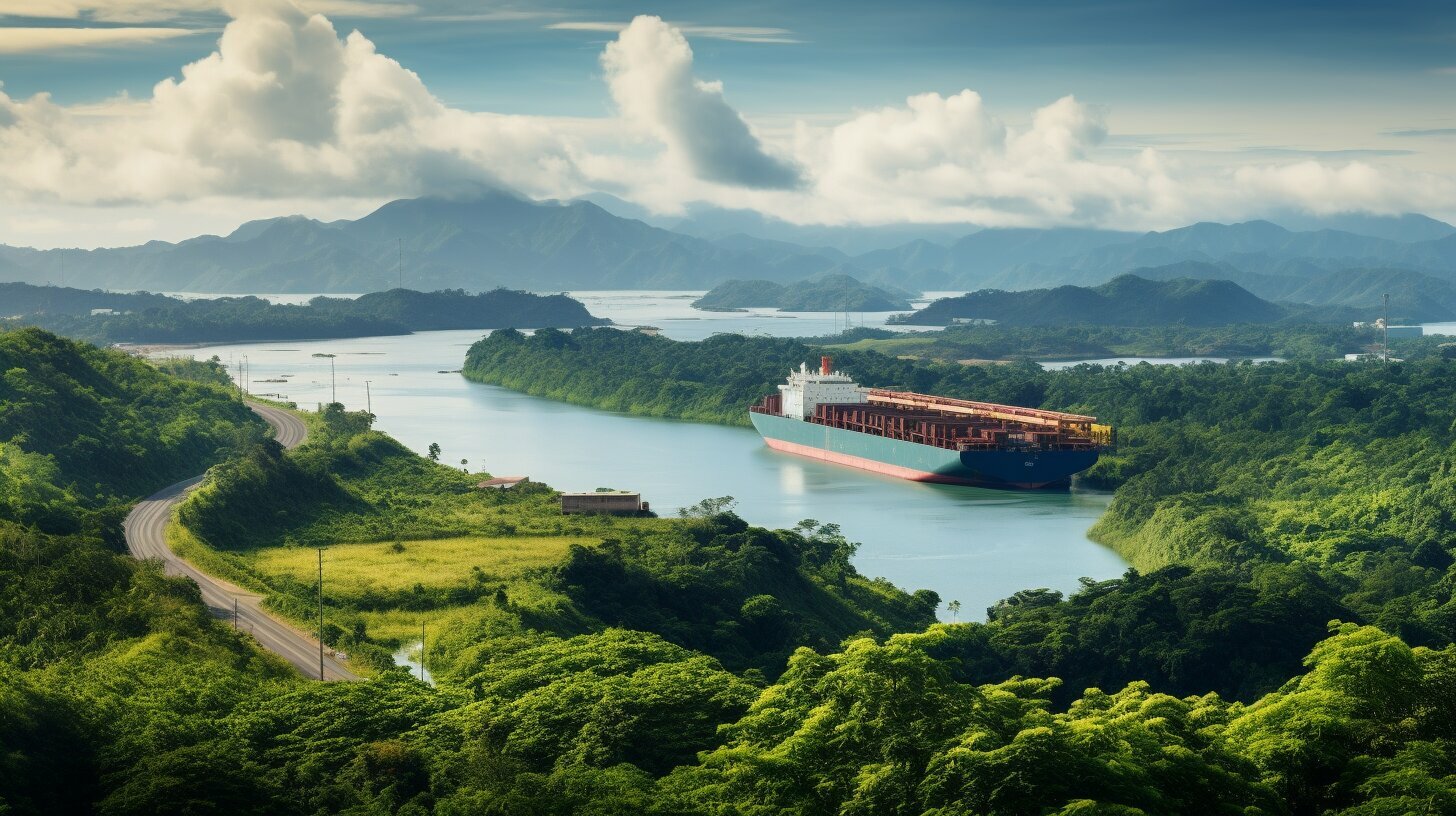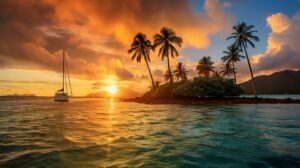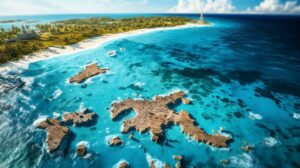Panama is a Central American country that connects North and South America through the Isthmus of Panama. It is bordered by Costa Rica to the west and Colombia to the southeast. The country’s capital and largest city is Panama City.
Key Takeaways:
- Panama is a country in Central America.
- It is located on the Isthmus of Panama.
- Panama borders Costa Rica to the west and Colombia to the southeast.
- The country’s capital is Panama City.
- Panama is known for its natural beauty and diverse wildlife.
The Geography of Panama
The geography of Panama plays a crucial role in its position as a key transit point between the Atlantic and Pacific Oceans. Located on the Isthmus of Panama, which connects North and South America, this narrow strip of land offers a strategic location for trade and transportation. Panama is bordered by Costa Rica to the west and Colombia to the southeast, making it a gateway between Central and South America.
One of the most notable features of Panama’s geography is the Panama Canal. This engineering marvel, connecting the Atlantic and Pacific Oceans, has transformed global trade by providing a shortcut for ships to avoid the long and treacherous journey around South America. The canal serves as a major transportation hub, facilitating the movement of goods and resources between continents.
Aside from its canal, Panama is also known for its diverse topography. The country boasts a mix of mountains, rainforests, and coastal plains. The majestic Cordillera Central mountain range runs through the center of Panama, offering breathtaking views and opportunities for outdoor activities such as hiking and birdwatching. The tropical rainforests are home to a wide variety of plant and animal species, making Panama a haven for biodiversity.
| Key Features of Panama’s Geography |
|---|
| Panama Canal: A major transportation hub |
| Cordillera Central mountain range |
| Tropical rainforests |
In addition to its natural wonders, Panama’s location on the Pacific Rim has economic significance. The country serves as a gateway to the Americas and has attracted investments in sectors such as commerce, banking, and tourism. The revenue generated from the Panama Canal tolls is also a significant contributor to the country’s economy.
In summary, the geography of Panama provides a unique setting that has shaped its history and economic development. From its strategic position as a bridge between two continents to its diverse topography and natural beauty, Panama offers a blend of opportunities for trade, exploration, and appreciation of its remarkable landscapes.
The Rich History of Panama
The history of Panama is rich and diverse, with influences from indigenous cultures, Spanish colonization, and its significant relationship with the United States. Dating back thousands of years, Panama was inhabited by various indigenous tribes, including the Cueva and Coclé peoples, who left behind intricate artwork and artifacts. These early civilizations laid the foundation for the cultural heritage that thrives in Panama today.
The arrival of Spanish explorers led by Rodrigo de Bastidas in 1501 marked the beginning of Panama’s colonization by the Spanish Empire. The country became an important trading hub for Spain, connecting its territories in the Americas and serving as a key port for transporting gold and silver back to Europe. During this period, Panama City, the capital, was established and became a center of commerce and administration.
One of the most significant chapters in Panama’s history is its role in the construction and transfer of the Panama Canal. The idea of a canal through the Isthmus of Panama dates back to the early 16th century, but it was not until the late 19th century that the project gained momentum. The United States took over the construction of the canal in 1904 and completed the monumental engineering feat in 1914. The canal revolutionized global trade by providing a shortcut between the Atlantic and Pacific Oceans, significantly reducing travel time for ships and boosting international commerce.
Quotes:
“The history of Panama is a testament to the resilience and adaptability of its people, who have overcome challenges and embraced opportunities for growth and development.” – [Author Name]
Key Facts:
- Panama is located on the Isthmus of Panama, connecting North and South America.
- The country is bordered by Costa Rica to the west and Colombia to the southeast.
- Panama City is the capital and largest city of Panama.
- The Panama Canal serves as a major transportation hub and contributes significantly to the country’s economy through canal tolls.
- Panama has a diverse population, including indigenous tribes and a mix of ethnic groups.
- The economy of Panama is driven by industries such as commerce, banking, and tourism.
Table: Famous Landmarks in Panama
| Landmark | Location |
|---|---|
| Panama Canal | Various locations along the canal |
| Casco Viejo | Panama City |
| San Blas Islands | Archipelago of San Blas |
| Pearl Islands | Bay of Panama |
The Panama Canal: A Marvel of Engineering
The Panama Canal is a monumental feat of engineering and serves as a vital transportation artery, connecting the world’s major shipping routes. This incredible waterway, located in the heart of Panama, has had a profound impact on global trade and commerce since its completion in 1914.
Stretching approximately 50 miles from the Atlantic Ocean to the Pacific Ocean, the Panama Canal is a marvel of human ingenuity. It features a sophisticated system of locks that allow ships to navigate through the canal, overcoming the significant difference in elevation between the two oceans. Through these locks, massive vessels are lifted and lowered, enabling them to safely traverse the canal and avoid the longer and more treacherous route around the tip of South America.
The importance of the Panama Canal cannot be overstated. It saves ships thousands of miles and countless hours of travel time, making it a major transportation hub for international trade. The canal has facilitated the movement of goods and resources between the Atlantic and Pacific, greatly contributing to the growth and prosperity of nations worldwide. In addition, the revenue generated from canal tolls has been a significant source of income for Panama, fueling its economy and development.
Today, the Panama Canal continues to play a vital role in global commerce. It accommodates a wide range of vessels, from container ships to cruise liners, and is constantly adapting to meet the demands of an ever-evolving shipping industry. As a symbol of human achievement and innovation, the Panama Canal stands as a testament to the power of engineering and the transformative impact it can have on the world.
Table: Panama Canal Statistics
| Year Opened | Length | Number of Locks | Annual Canal Traffic |
|---|---|---|---|
| 1914 | Approximately 50 miles | 3 sets of locks | Over 14,000 vessels |
Cultural Diversity and Natural Beauty
Panama is renowned for its cultural diversity, with a vibrant mix of indigenous tribes and ethnic groups, as well as its stunning natural landscapes and rich biodiversity. The country’s diverse population is a testament to its history and serves as a source of pride for its people.
Indigenous tribes have a significant presence in Panama, with several communities preserving their ancestral traditions and way of life. These tribes, such as the Guna, Emberá, and Ngäbe-Buglé, add to the cultural fabric of the country and offer visitors a unique glimpse into their customs, crafts, and beliefs.
But Panama’s cultural diversity extends beyond its indigenous tribes. The country is a melting pot of various ethnic groups, including Afro-Panamanians, mestizos, and descendants of European immigrants. This multicultural mix has shaped Panama’s cuisine, music, and traditions, creating a rich and vibrant cultural tapestry.
Aside from its diverse population, Panama is also blessed with awe-inspiring natural beauty. The country is home to lush rainforests teeming with tropical plants and animals, making it a paradise for nature lovers and wildlife enthusiasts. From the breathtaking landscapes of the Chiriquí Highlands to the pristine beaches of Bocas del Toro, Panama offers a wide range of natural wonders to explore and admire.
FAQ
Q: What country is Panama in?
A: Panama is located in Central America, between Costa Rica and Colombia.
Q: What is the geography of Panama?
A: Panama features a diverse geography, including tropical rainforests, mountains, and coastal plains. It is also home to the Panama Canal, which connects the Atlantic and Pacific Oceans.
Q: What is the history of Panama?
A: Panama has a rich history, including indigenous civilizations, Spanish colonization, and eventual independence. It is also known for its ties to the United States, particularly through the construction and transfer of the Panama Canal.
Q: What is the significance of the Panama Canal?
A: The Panama Canal is a major transportation hub, facilitating global trade and providing a vital connection between the Atlantic and Pacific Oceans. It also contributes significantly to Panama’s economy through revenue generated from canal tolls.
Q: What is the cultural diversity of Panama?
A: Panama boasts a diverse population, including indigenous tribes and a mix of ethnic groups. This cultural fusion is reflected in the country’s traditions, music, cuisine, and celebrations. Panama also showcases natural beauty, with its abundant tropical plants and animals.



